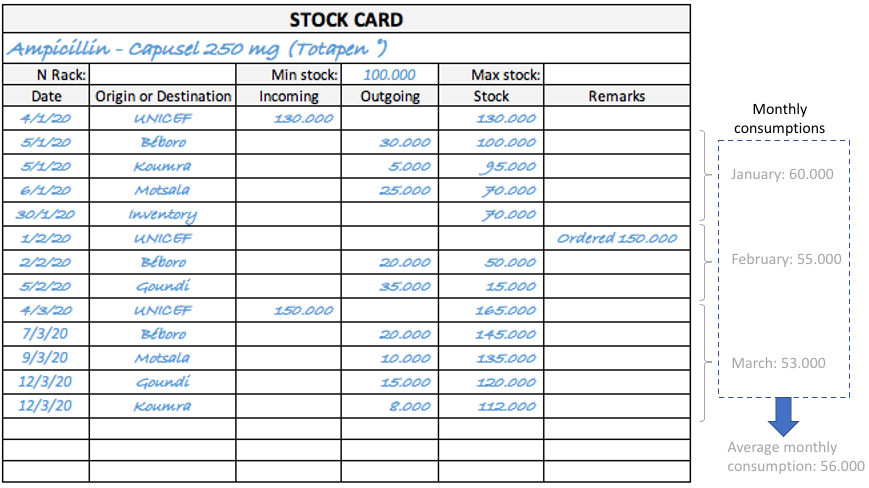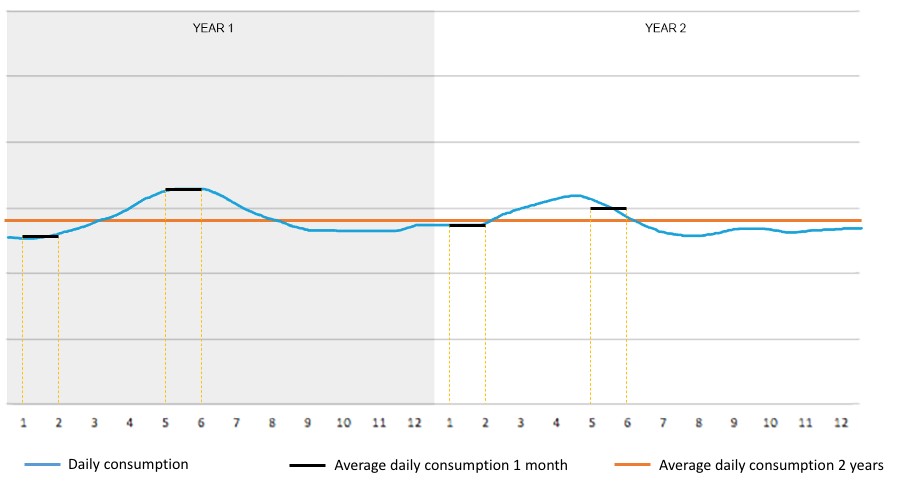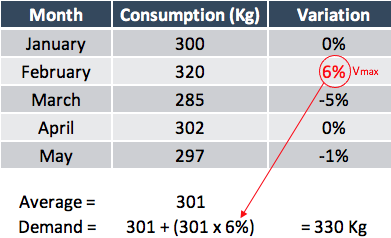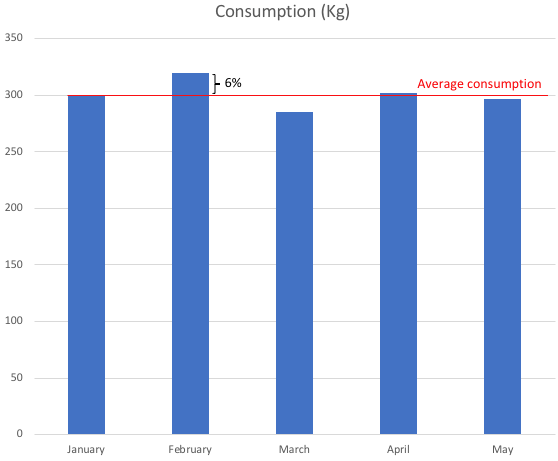"Demand forecasting" is the process of attempting to predict future demand as accurately as possible using available data. Demand forecasting can be a simple task, but it becomes more complex when managing many different products and/or when multiple customers with differing demand cycles place orders concurrently.
A good forecast can be achieved by reviewing historical orders and consumption patterns. Consumption data is normally arranged in discrete time slots. Different time slots can be used depending on the frequency of outbound movements from the inventory: years, quarters, months, weeks, days. Though the time period granularity has to be defined according the context, “monthly consumption” is the most commonly used. A monthly consumption is the quantity of a particular item leaving the warehouse per month.
Recording and monitoring consumption figures is the key activity to forecast. The simplest way to calculate monthly consumption is by counting the deliveries recorded on stock cards or other tracking systems. The more records are available on historical consumption, the more accurate and reliable the forecast will be. Between three and ten previous “time slot” previous periods can provide reasonable results for demand forecasting.

Demand (D) can be established based on the average consumption of previous records. Average consumption is calculated by adding a number of consumption (C1– CN) figures and dividing by the number (N) of figures used:
Consumption can be calculated by reviewing historical periods of time in relation to key destinations or areas of intervention. In relief operations, consumption during the kick-off of an activity may be higher than in subsequent orders. This is commonly due to:
- Push style inventory system.
- Lack of coherent demand signals.
- Planners sending supplies based on worst case scenarios.
Stock managers should not consider forecast figures as a certainty. For critical items it is recommended to define alternative scenarios which reflect different possible future developments. The typical exercise to deal with uncertainty consists of designing a best and a worst-case scenario in addition to an average case forecast.
To define demand in worst and best-case scenarios, planners should identify the maximum positive (and negative) variation (Vmax) over the last recorded time period, and add (or deduct) the Vmax to of the average monthly consumption.
Depending on the context and the type of inventory, seasonal fluctuations may appear. Data based on previous years or consumption figures, or of previous interventions can help to prevent stock-outs or over-stocks due to seasonally increased or decreased demand. It is recommended to check previous annual demand signals to identify and understand seasonal patterns.
Using annual data to calculate average monthly consumption can help balance sporadic high demands: surplus stock built up during low consumption periods should compensate higher demand during high consumption periods. If agencies plan to hold unused stock for anticipated higher demand, they must ensure that stock will not expire or become unusable by the higher period of anticipated demand. Pre-positioned or new stock items may not be a major issue, but inventory delivered to a country may already be approaching the end of its life and must be used accordingly.

If seasonal fluctuations are substantial and average consumption between different months differ significantly, seasonal stocks with specific thresholds could be considered. In such cases demand forecasts must accommodate the time-frame and the period in the year to be covered.
Limitations of Forecasting
While forecasts can be useful for smoothing out demand curves and predicting seasonal needs, they also come with their own limitations, especially in the humanitarian context. An inappropriate demand forecast can lead to stock wastage in the form of unused items piling up, or major stock outs.
A demand forecast should never be confused with the goals of a project. Humanitarian projects often run on expected population numbers or goals reported to donors. A demand forecast should be built upon real consumption data and informed by demand signals, not the desired distribution numbers. Early in a humanitarian intervention, it can be hard or impossible to know what real consumption numbers will be, and project plans or available funds is the only data to work from. After a project has been running for a few months, any given forecast must be revisited.
Another risk of demand forecasts in humanitarian response is the unpredictable nature of the response environment. Unforeseen natural disasters, civil unrest or governmental regulations can dramatically alter demand signals, driving up or slowing down consumption. While these events may be hard to predict, they should be adapted into future demand forecasts.



